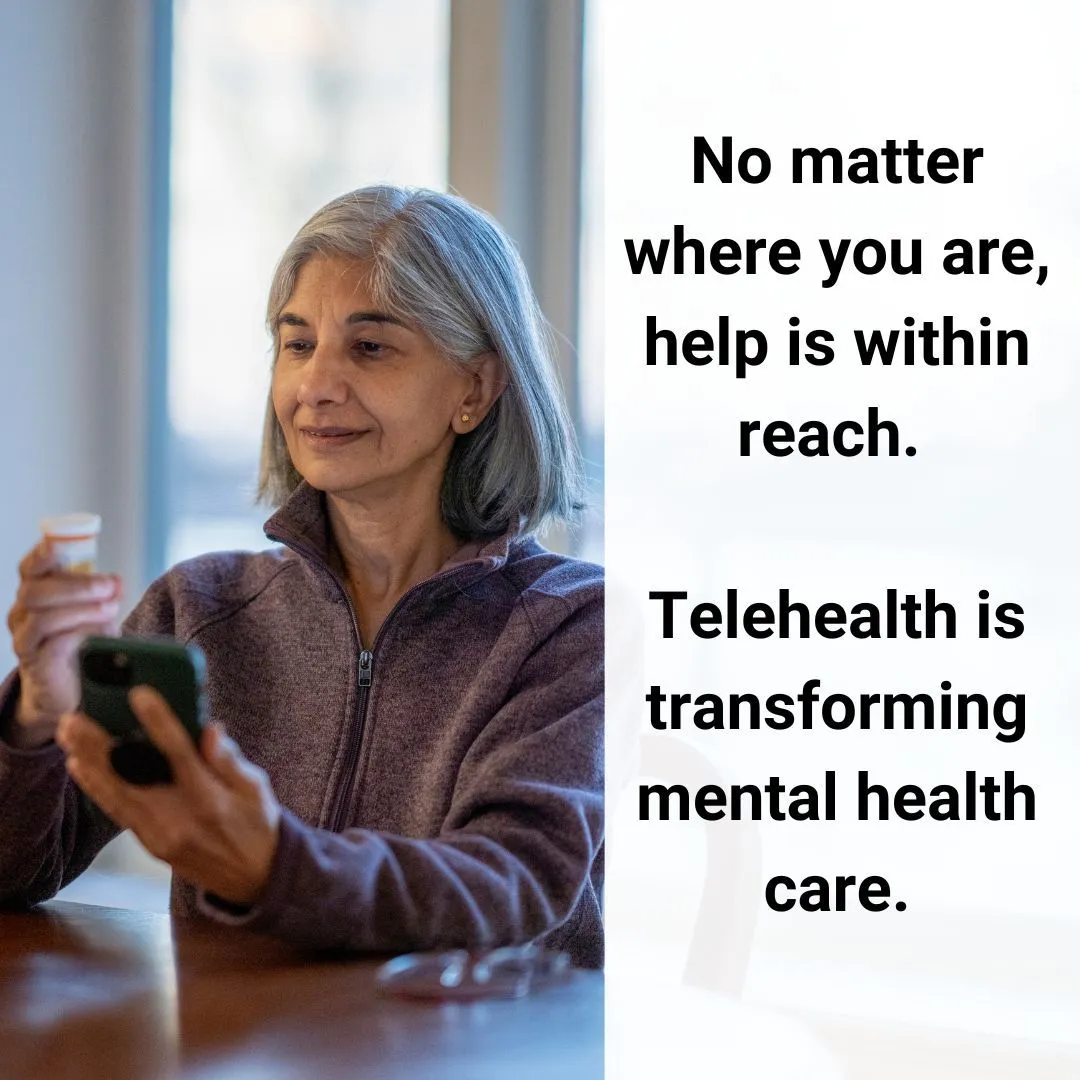I just spent a few days in Anchorage at the 2025 Alaska Academy of Family Physicians Winter Update. During one of the wonderful education sessions, I learned a staggering statistic: Alaska Natives have an 80% higher prevalence of dementia compared to the non-hispanic White population. That’s a number that stops you in your tracks. When we dug into why, the reasons were familiar: higher rates of chronic physical and mental illness, economic hardship, and limited access to healthcare.
As I listened, something clicked. I couldn’t help but see the parallels with another crisis we’re facing: mental health. The same risk factors that contribute to dementia also make it harder for people to access psychiatric care. And when mental illness goes untreated for too long, it doesn’t just cause immediate suffering, it can increase the risk of long-term cognitive decline, chronic disease, and even dementia.
The good news? We have a way to fight back. Mental health telehealth services are breaking down barriers and delivering care to people who otherwise wouldn’t have access. It’s a solution that’s already changing lives and one that has the potential to transform the future of mental healthcare.
The Connection Between Mental Illness and Dementia
When we talk about dementia, most people think of old age as the primary risk factor. And it is. But there’s something else that doesn’t get talked about enough: mental health.
Years of research have shown a strong link between untreated mental illness and dementia. People with depression, anxiety, and PTSD are more likely to develop cognitive decline as they age. Why? Because chronic stress and mental illness take a toll on the brain. High levels of stress hormones like cortisol can damage areas of the brain responsible for memory and decision-making.
On top of that, people with untreated mental illness are more likely to develop other health conditions that contribute to dementia, such as:
Heart disease and high blood pressure: Both are major risk factors for Alzheimer’s. Diabetes: Increases inflammation and damage to blood vessels in the brain. Social isolation and loneliness: Strongly linked to cognitive decline. Substance use disorders: Alcohol and drug use increase dementia risk.
If we want to reduce the number of people developing dementia in the future, one of the most effective things we can do is start treating mental illness earlier. But there’s a problem: far too many people don’t have access to psychiatric care when they need it most.
Who Is Most Affected by the Mental Health Care Shortage? Just like dementia rates are disproportionately high among Alaska Natives, mental health care isn’t equally accessible to everyone. Some groups struggle to get care more than others, including:
- People in Rural Areas More than 150 million Americans live in areas where there aren’t enough mental health professionals. In rural communities, there might be zero psychiatrists for hundreds of miles. If someone is struggling with depression, anxiety, or a severe mental illness, they’re often left with two bad choices: wait months for an appointment or go without care.
- Indigenous and Alaska Native Communities Just like dementia, mental illness is more common among Indigenous populations. They experience higher rates of PTSD, depression, and suicide, often due to intergenerational trauma, poverty, and lack of resources. But many reservations and Native communities don’t have mental health professionals on site, making it difficult to get consistent care.
- People with Limited Mobility or Busy Schedules Even for those in cities, seeing a psychiatrist can be a challenge. Parents, caregivers, and working professionals often struggle to fit mental health appointments into their lives. And for people with disabilities or chronic illnesses, traveling to appointments can be exhausting and costly.
When mental health care isn’t accessible, the consequences can be severe.
The Cost of Untreated Mental Illness When people don’t get the mental health care they need, it doesn’t just affect them, it affects their families, their communities, and the entire healthcare system. Just like dementia, untreated mental illness leads to widespread suffering.
- Increased ER Visits and Hospitalizations When people can’t access regular psychiatric care, they end up in crisis mode. Instead of seeing a psychiatrist when symptoms first appear, they land in the ER during a mental health emergency. This cycle strains hospitals and leaves patients without long-term solutions.
- Higher Rates of Homelessness and Incarceration Severe mental illness is one of the leading causes of homelessness and incarceration. Many people with conditions like schizophrenia or bipolar disorder don’t get the treatment they need until they’ve lost their housing or ended up in the criminal justice system.
- Increased Risk of Dementia and Other Chronic Diseases As we’ve seen, untreated mental illness contributes to dementia. It also makes managing other health conditions harder, increasing the risk of diabetes, heart disease, and early mortality.
The system is broken, but we don’t have to accept it.
How Telehealth Psychiatry is Breaking Barriers Tele mental health is one of the biggest breakthroughs in mental health care in decades. By using online therapy and virtual psychiatrist services, we can bring care to people instead of making them travel to it.
With a telehealth psychiatrist, patients can:
- Meet with a provider from home: no travel required.
- Get care faster than waiting months for an in-person appointment.
- Have regular follow-ups, improving long-term outcomes.
This is a game-changer for people in rural areas, Indigenous communities, and anyone struggling to find in-person care.
Overcoming Skepticism About Telehealth Mental Health Services Some people worry that telehealth psychiatry isn’t as good as in-person care. But studies show that online therapy and psychiatrist telehealth services are just as effective for most conditions.
What about privacy? Telehealth platforms follow strict HIPAA regulations to protect patient information.
Insurance? Many states are expanding telehealth coverage, making care more affordable and accessible than ever.
Telehealth isn’t meant to replace in-person care, but for many people, it’s the only realistic option. And it works.
A Call to Action: The Future of Mental Health Care
Alaska is on the frontlines of the dementia crisis. And all of rural America is on the frontlines of the mental health crisis. If we don’t act now, millions of people will continue to suffer.
The good news? Telehealth mental health services are changing the game. By making psychiatric care more accessible, we’re not just helping people in the moment—we’re reducing the long-term burden of mental illness and dementia.
If we truly want to transform mental health care in America, we need to:
- Expand access to telehealth psychiatry for rural and underserved communities.
- Educate policymakers and healthcare providers on its benefits.
- Encourage early mental health intervention to reduce dementia risk.
This is our moment to change the system for the better. And with telehealth, we have the tools to make it happen.
Hope for the Future
We can’t solve the mental health crisis overnight. But we can start today. Telehealth is already bringing care to people who never had access before. And as it continues to grow, so does our ability to prevent suffering, not just now, but decades into the future.
Because when we invest in mental health today, we’re also protecting brain health for tomorrow.
And that’s a future worth fighting for.





